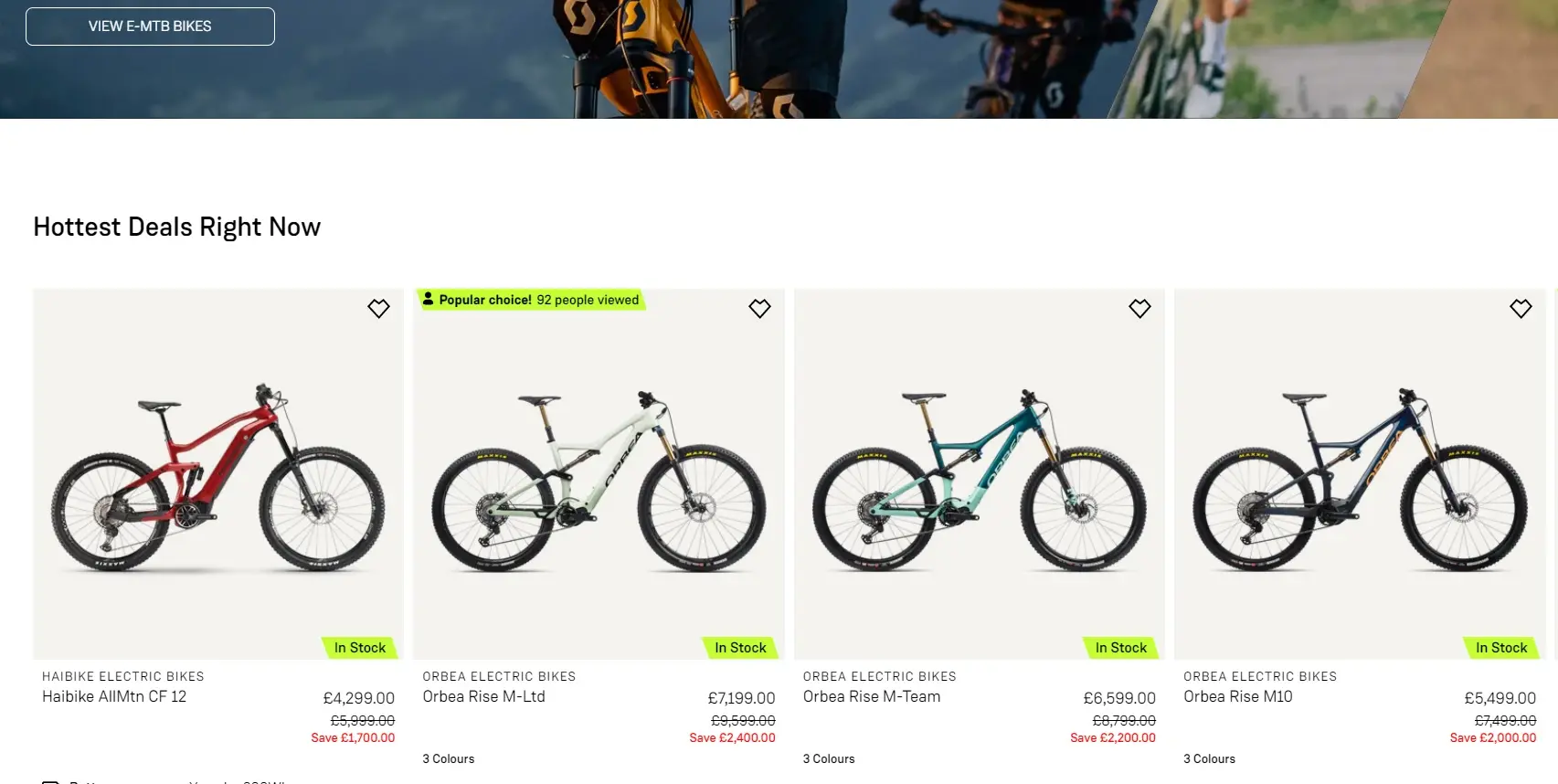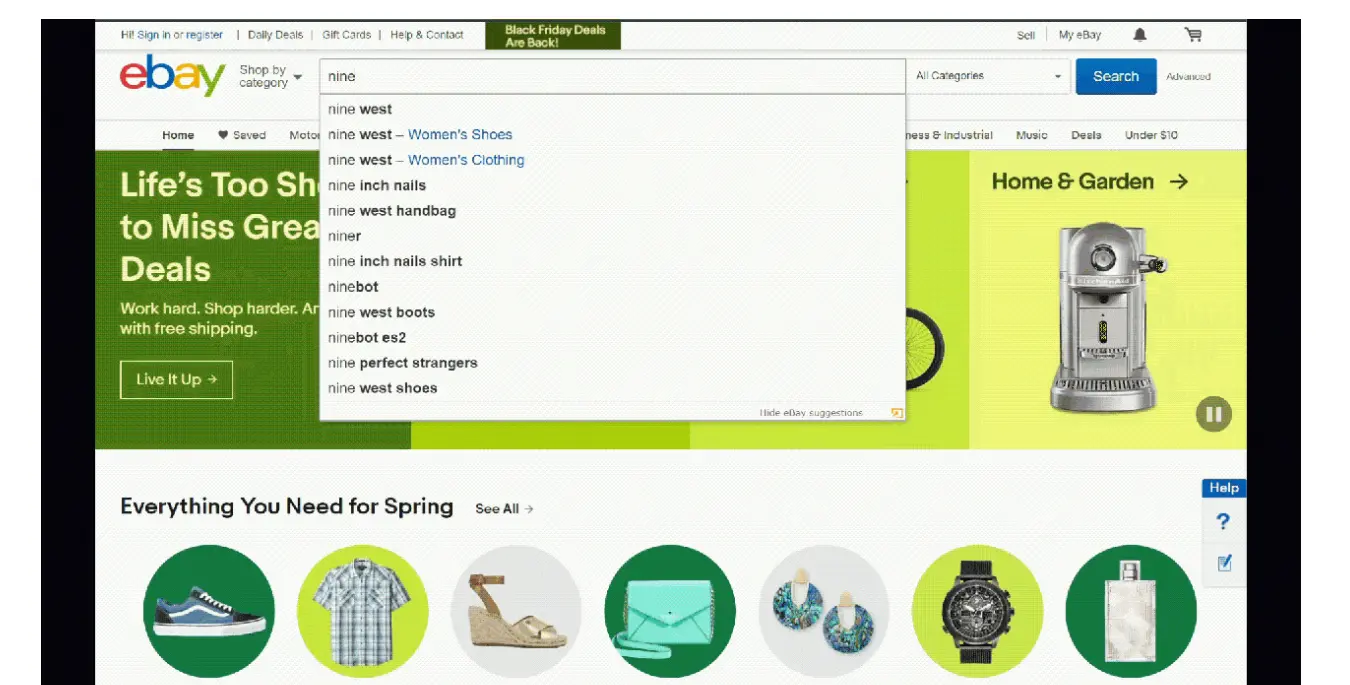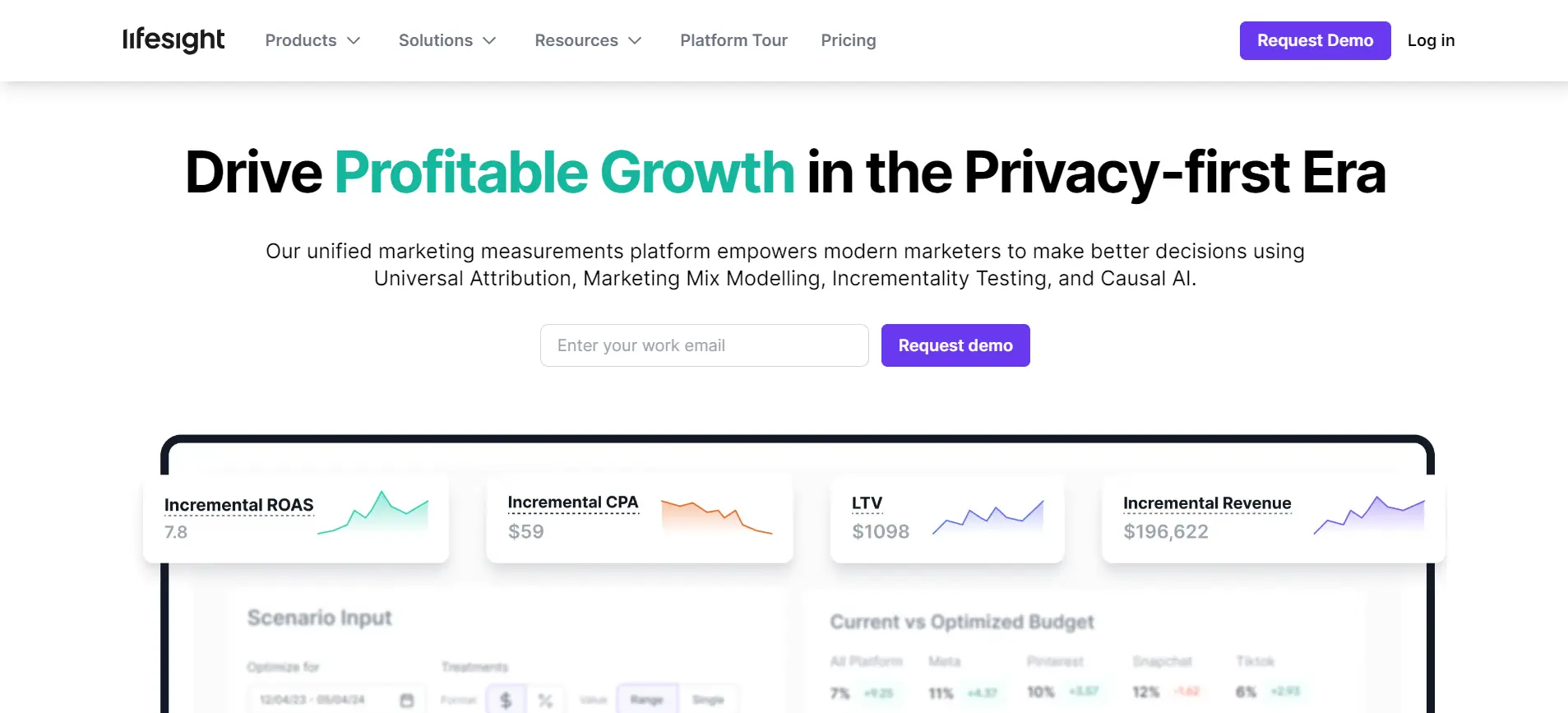Ecommerce merchandising has emerged as a crucial strategy for businesses seeking to optimize their online performance. It’s no longer enough to simply list products on a website and wait for customers to find them. Today’s savvy online shoppers demand more – they seek engaging, personalized shopping experiences akin to walking into their favorite brick-and-mortar store, but with the convenience of digital.
Merchandising in ecommerce is about presenting the right product, to the right person, at the right time. – Kevin McKenzie
This shift in customer expectations is reflected in the numbers. A study conducted by Accenture found that 91% of consumers are more likely to shop with brands that provide relevant offers and recommendations. This highlights the importance of personalized ecommerce merchandising.
As we journey through this blog, we’ll unravel what ecommerce merchandising truly is, its key components, effective strategies to leverage, and how it is shaping the future of online retail. Whether you’re a budding ecommerce entrepreneur or an established business looking to optimize your online presence, this guide will provide valuable insights to help you maximize your ecommerce potential.
What is ecommerce merchandising?
Simply put, ecommerce merchandising involves the strategic display and promotion of products on an online platform to boost sales. Much like traditional merchandising in physical retail, it revolves around making products appealing and accessible to customers.
However, ecommerce merchandising extends beyond mere aesthetics. It’s about creating an intuitive, engaging, and personalized shopping experience for each visitor to your website or app.
Components of ecommerce merchandising
An effective ecommerce merchandising strategy comprises several key components, each playing a unique role in driving sales and enhancing customer experience. Understanding these components is crucial to devising a merchandising strategy that resonates with your target audience and meets your business goals.
Segmentation and personalization: This is no more a luxury in ecommerce merchandising; it’s a necessity that drives customer satisfaction and loyalty.
It involves using data to understand customer preferences and behavior and offering tailored product recommendations, content, and promotions. This level of personalization makes customers feel valued and understood, thereby enhancing their shopping experience and encouraging repeat purchases.
Product information management: Detailed and accurate product information is the cornerstone of successful ecommerce merchandising. It involves creating comprehensive product descriptions, technical specifications, and pricing details.
This information should be consistent across all channels and easily accessible to customers. High-quality product images and videos are also essential to help customers make informed buying decisions.
Visual merchandising: Visual merchandising in ecommerce serves the same purpose as store window displays in physical retail – to attract, engage, and convert.
It involves strategically arranging products and using appealing visuals to guide the customer journey on your website. This can include carousel images, banners, product highlight sections, or even virtual storefronts for an immersive shopping experience.
Search engine optimization (SEO): SEO is an integral part of ecommerce merchandising, ensuring your products are found by the right customers at the right time. This involves optimizing product descriptions, meta tags, URLs, and other content with relevant keywords to improve visibility on search engines.
Also, companies that are implementing the autocomplete feature on their website search bar have seen an increase in sales by 24%. Combining Natural Language Processing (NLP) algorithms with autocomplete to offer query results that reflect user intent is a technique that is being refined by large ecommerce platforms.
Here’s an example of how seamlessly eBay optimizes its search.
ecommerce-merchandising-example-ebay-optimizes-search
User experience (UX): UX is all about making your online store as intuitive and user-friendly as possible. This includes easy navigation, fast loading speeds, responsive design, and a seamless checkout process. A positive user experience can significantly reduce cart abandonment rates and boost conversions.
For instance, dynamic filters and facets are being adopted by several direct-to-consumer companies. Facets are a type of filter used by online retailers to help shoppers narrow their product searches. Merchandisers tend to establish guidelines for things like pricing, brand, size, etc.
Decor retailer Rugs provides its customers with facet options.
ecommerce-merchandising-example-rugs-optimizes-search
Moreover, effective facets were one factor that gave them a 16.5% lift in their average order value after investing in an ML search and discovery platform.
Now let’s dive deeper into some proven strategies that can elevate your ecommerce merchandising game. Implementing these tactics can significantly enhance your online store’s performance, resulting in higher engagement, increased sales, and improved customer loyalty.
Strategies for effective ecommerce merchandising
1) Cross-selling and up-selling
Cross-selling and up-selling techniques can significantly increase the average order value, thereby boosting your revenue. Cross-selling involves suggesting complementary products to customers based on their current selections while up-selling encourages customers to purchase a higher-priced item or bundle.
These strategies can be implemented through personalized product recommendations, well-placed promotional banners, or even during the checkout process.
With the subheading “Highest Rated Products,” SwimOutlet shows off its most popular things in a classy way.
strategies-for-ecommerce-merchandising-cross-selling-like-swimoutlet
2) Dynamic pricing
Dynamic pricing strategy involves adjusting prices in real-time based on market demand, competition, and other factors. This approach can help you stay competitive and maximize profits. By utilizing AI and machine learning algorithms, you can analyze data and automate price adjustments, ensuring you always offer the right price to the right customer at the right time.
E-Bikeshop, a platform for selling bikes in the UK, employs dynamic pricing to offer prices that are better than those of UK rivals like ElectricRider and Electric Bike World.

3) Using analytics and data
Harnessing the power of data analytics can provide invaluable insights to refine your merchandising strategy. Analyze customer behavior, shopping patterns, and preferences to identify trends and opportunities for growth. Use these insights to make data-driven decisions, such as adjusting product displays, personalizing recommendations, and optimizing promotions.
Lifesight has a powerful audience segmentation engine, which allows you to create and target specific customer segments based on demographic, geographic, and real-time behavioral data. Once you decide who you’re trying to reach, you can deploy various well-timed campaigns for every step of your customer journey.
strategies-for-ecommerce-merchandising-using-lifesight-for-analytics
4) Engaging product descriptions
A compelling product description does more than just inform; it persuades and leads the customer to checkout. Craft engaging, informative, and SEO-optimized descriptions that highlight your product’s unique features, benefits, and value propositions. Use storytelling techniques to create an emotional connection with customers and make your products stand out from the competition. A paragraph generator can help speed up and simplify the process of writing effective product descriptions at scale.
In this case, Casper starts its product description by saying, “Here’s how the Original Mattress unlocks your best night’s sleep for even better tomorrows.” This line does a great job of appealing to customers’ hopes for better sleep and, by default, a better quality of life in general. The word “unlocks” also has a lot of power because it suggests that this mattress fixes a problem that the customer has had for a long time.
strategies-for-ecommerce-merchandising-product-description-like-casper
5) A/B testing
Continuously test and optimize your ecommerce merchandising efforts through A/B testing. This involves comparing the performance of two different versions of a webpage, product display, or promotional campaign to determine which one performs better. A/B testing can help you make informed decisions about your merchandising strategy and maximize your ROI.
Best tools for A/B testing
- Google Optimize
- Optimizely
- VWO
- AB Tasty
- Crazy Egg
6) Mobile-First Approach
With the majority of online shopping now taking place on mobile devices, it’s crucial to adopt a mobile-first approach to ecommerce merchandising. Here’s a deeper look into how this approach can be implemented effectively:
- Responsive Design: Your website must be designed to provide a seamless shopping experience across all devices. This means that the website should automatically adjust its layout, images, and functionalities based on the device being used, ensuring a smooth and consistent user flow.
- Optimized Images and Content: Given the smaller screen size of mobile devices, images and content need to be optimized accordingly. Images should be high-quality yet lightweight to ensure they load quickly without compromising on the visual appeal. Similarly, product descriptions should be concise and informative, keeping the mobile user’s need for quick information in mind.
- Simple Navigation: A mobile-first approach requires an easy-to-use and intuitive navigation structure. Complex menus and multiple categories can be off-putting for mobile users. Keep the navigation simple, use drop-down menus sparingly, and ensure that the search functionality is prominently placed and effective.
- Fast Loading Speed: Mobile users are typically on-the-go and expect web pages to load quickly. A delay of even a few seconds can lead to high bounce rates. Therefore, it’s essential to optimize your site’s loading speed by compressing images, minimizing HTTP requests, and using a content delivery network (CDN) if possible.
- Seamless Checkout Process: A complicated checkout process can be a major deterrent for mobile shoppers. Optimize the checkout process by minimizing the number of steps required, offering guest checkout options, and integrating various payment methods, including mobile wallets. Also, ensure that the forms are easy to fill out on a mobile device.
- App-Like Experience: Providing an app-like experience can significantly enhance user engagement. Techniques like Progressive Web Apps (PWAs) can provide mobile users with an app-like shopping experience, right from their browsers, including features such as push notifications and offline access.
- Mobile SEO: Finally, don’t forget to optimize your mobile site for search engines. Mobile SEO can help improve your website’s visibility on search engine result pages, driving more organic traffic to your site.
7) Leverage social proof
Social proof such as customer reviews, ratings, and testimonials, can have a significant impact on purchase decisions. Encourage customers to share their experiences and showcase these reviews prominently on your product pages. Additionally, consider integrating user-generated content (UGC), such as customer photos or videos, into your merchandising strategy to build trust and credibility.
Hometown Hero is a direct-to-consumer (DTC) brand based in Texas that sells tasty hemp goods to US veterans. On the home page of their website, they show reviews from real customers.
strategies-for-ecommerce-merchandising-social-proofs-like-hometown-hero
The Future of Ecommerce Merchandising
With the rapid technological advancements, the future of ecommerce merchandising promises even more opportunities for businesses to connect with their customers. Let’s explore some trends that are set to shape the ecommerce landscape in the coming years.
Artificial Intelligence (AI) and Machine Learning (ML): AI and ML technologies are integral to ecommerce merchandising. They can analyze vast amounts of data in real time, providing personalized product recommendations, optimizing pricing strategies, and even predicting future trends. These technologies enable businesses to offer a highly personalized and efficient shopping experience, driving customer satisfaction and loyalty.
Augmented Reality (AR) and Virtual Reality (VR): AR and VR technologies are revolutionizing the way customers shop online. AR allows customers to virtually ‘try on’ products or visualize them in their own environment before making a purchase, while VR offers immersive, 3D shopping experience technologies that can significantly enhance customer engagement and boost conversion rates.
Voice Commerce: With the rise of smart speakers and voice assistants, voice commerce is set to become a significant part of ecommerce merchandising. Businesses will need to optimize their product descriptions and SEO strategies for voice search to cater to this growing trend.
Social Commerce: Social media platforms are increasingly important in ecommerce. Businesses are leveraging these platforms not just for marketing, but also for selling their products directly. This trend is set to grow, with platforms like Instagram and Facebook continuously enhancing their ecommerce capabilities.
Sustainability: As consumers become more environmentally conscious, sustainability is becoming a crucial factor in their purchasing decisions. Ecommerce businesses will need to focus on sustainable practices, such as eco-friendly packaging, carbon-neutral shipping, and ethically sourced products, to attract and retain these conscious consumers.
Data Privacy and Security: With the increasing prevalence of data breaches, businesses will need to prioritize data privacy and security. Consumers will gravitate towards businesses that protect their personal information and provide transparent data handling practices.
Final Thoughts
From understanding the fundamentals of ecommerce merchandising to implementing effective strategies and preparing for future trends, we’ve covered a lot in this guide. Whether you’re a budding ecommerce entrepreneur or a seasoned professional, mastering the art of ecommerce merchandising is a crucial step towards online retail success.
Remember, the key to effective ecommerce merchandising is to put your customer at the center of everything you do. Invest time and resources into understanding your customers’ needs, preferences, and shopping behavior. Use these insights to create a seamless, engaging, and personalized shopping experience that not only drives sales but also fosters customer loyalty.
You may also like
Essential resources for your success






























































